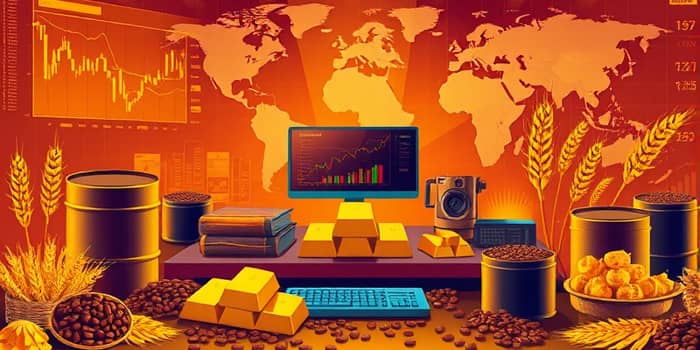
Diving into the world of commodities can be both exhilarating and daunting for newcomers. This guide will illuminate the landscape of raw materials markets, equipping you with actionable insights and practical steps to begin trading with confidence.
With a clear understanding of fundamental concepts, trading instruments, strategies, and risk controls, even those with no prior experience can build a solid foundation.
At its core, commodities trading involves buying and selling raw materials—ranging from metals to agricultural goods—to profit from price movements. Whether you’re hedging risks or speculating on market shifts, this sphere offers diverse opportunities.
Commodities are grouped into major categories:
Price in commodities markets is largely driven by the central role of supply and demand. Geopolitical tensions, extreme weather events, and technological changes can all disrupt supply chains, causing sharp price shifts. Conversely, oversupply or diminished demand can depress markets.
Another characteristic is volatility. Commodities are often highly unpredictable with sudden shifts in response to macroeconomic data releases or unexpected global events, making them suitable for traders seeking dynamic opportunities but also necessitating robust risk controls.
Beginners should familiarize themselves with the various vehicles used to access commodities markets:
Beginning your trading journey requires careful planning and education. Follow these essential steps to establish a strong base:
Developing a clear approach can help you navigate market complexities:
While commodities trading can yield significant rewards, it also carries substantial risks. Key considerations include:
Market volatility, driven by weather changes, geopolitical events, or technological disruptions, can lead to rapid price swings. Instruments offering leverage—especially futures and CFDs—magnify both gains and losses.
Owning physical commodities entails logistics such as storage, security, and insurance costs, while regulatory oversight varies by region. Always verify that your broker and chosen exchanges are properly regulated to reduce the risk of fraud.
To refine your skills, explore reputable educational platforms, online courses, and live webinars. Demo accounts from major brokerages allow you to test strategies risk-free.
Track real-time data on exchanges such as the CME Group, London Metals Exchange, MCX/NCDEX, and ICE Futures. Leverage analysis tools offered by Bloomberg, Reuters, and trading software to stay informed and agile.
By mastering the fundamentals, selecting the right instruments, and implementing disciplined risk management, you can navigate the dynamic world of commodities trading and pursue your financial objectives with clarity and confidence.
References













